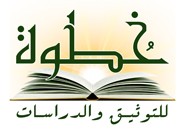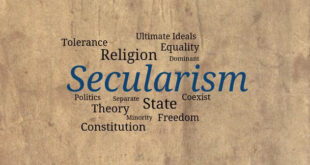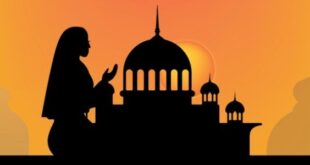The Divine Quranic Discourse:
Language Vs. Eloquence
Dr. Sawsan Ash-Shareef*
The Quranic Eloquence[1]“The Divine Quranic Discourse”:
The Quran is an absolute text. People, in every era and place can understand its guidance through its language and its semantic development, comprehensive understanding, reason-based interpretation and exegesis. However, no one can claim that he has reached the best and the most correct understanding of the Quran. Through this, he negates its absolute superiority and eternal inimitability and deal with it as a part of human heritage. In fact, the Noble Quran, through many Verses, declares its superiority. Thus, no one can pretend realizing the final understanding of the Quran. The Holy Quranic treasures can be reached through reading and true reflection, which is the ideal path to learning. Through reflection, reminding, understanding, deep insight, language and legacy, one can understand the Noble Quran. Depending on these tools, one can reflect also on the universe which is in itself another way to understand the Noble Quran[2].
In this regard, Taha Al-‘Elwany said that the Noble Quran is like the universe. The more we develop relevant research methods and the more we ponder over its Verses, the more new hidden gems are revealed. In fact, Taha Al-‘Elwany was the first to discuss the term “Lisan ul-Quran” (The Eloquence of the Quran), studying the linguistic connotations of the Quranic vocabulary. According to him, the Quran gives the terms, which are just common words in the Arabic language, a semantic breadth that no one had ever seen before the Revelation. In fact, renewing and diverse meanings and connotations make the difference between the DIVINE DISCOURSE and human discourse. Moreover, the Quranic eloquence is distinct from the Arabic language, as it has perfectly absorbed its arts, literature, style, and other advantages and go beyond it. When studying one of the vocabularies of the Noble Quran by tracing its meanings, origin, and connotations across history, we will find that this vocabulary is opened to the development and problems of every era, and encloses broad meanings. Therefore, we need to deal with the “Quranic vocabulary” as a “concept” that conveys several meanings relevant to the era of the Revelation and at the same time encloses broad meanings to benefit human thought.
The approach of the Lisan ul-Quran differs from the science of linguistics or sociolinguistics. It focuses on the meanings intended by Allah Almighty through Quranic concepts which convey deeper meanings; holding multiple social and humanitarian dimensions. On the other hand, linguistics focuses on the style and the ways of expression. Sociolinguistics focuses on the influence of society on language, while sociology of language focuses on the influence of language on society.
Furthermore, the Lisan ul-Quran has many characteristics that have been studied by ancient and modern scholars. It includes rhetorical, literary, linguistic, grammatical, morphological, declarative, systematic, and stylistic characteristics, in addition to other characteristics that prove its linguistic inimitability. In fact, these characteristics are numerous due to different viewpoints and readers. They are limitless, because the Quran is absolute, while man is relative, and the relative cannot encompass the absolute with its attributes and characteristics. Every reader understands characteristics and concepts according to his own point of view. In addition, the Holy Quran can reveal new concepts relevant to the contemporary problems and concepts of this changing world. Every generation has its own inspirations and theories due to the development and differences in its approaches, ways of knowledge, studying methods and reflection on the Quran, starting from the interpretation of its vocabulary to analysis and comprehensive reading (Reading the Revelation sent by Allah Almighty, and contemplating the universe that Allah has commanded us to contemplate), and its structural unity. There is no contradiction between the understandings and inspirations of the new generations and the inherited legacy reached by our ancestors according to their cognitive level, conditions, lifestyle, needs and cultural and cognitive systems. This forms a generational communication, an integration and accumulation of knowledge, analyzes and interpretations[3].
Eloquence vs. Language
For linguists, the difference between language (Lughah) and eloquence (Lisan) remained unknown till the nineteenth century AD. Whereas the Glorious Quran states this subtle difference, and the Arabs understood this difference from the Quran. Thus, they used the words “Al-Lisan Al-‘Arabi” referring to the Arabic tongue and “Lisan ul-Quran referring to the Quranic eloquence. They also used the word “lughah” referring to the language of the tribe Hazeel and Quraysh… etc. In fact, a language may be understood without being uttered, as signs, writing and anything which produces sounds are regarded as language. Similarly, drawings and pictures are expressive and narrative but they are wordless, so they cannot be called tongues. For example, Allah Almighty refers to gestures and signs as speech in: “He said, “Your sign is that you will not ˹be able to˺ speak to people for three days except through gestures..”” (3: 41). Language is usually confined to regional customs and inheritances. On the other hand, the tongue is more general and expressive, as one tongue can speak more than one language. The tongue is the tool, word, eloquence, speech, utterance and message. In some Quranic Verses, the tongue is mentioned to refer to the language as in, “…and the diversity of your tongues…” (30: 22), which means your dialects and tones. Moreover, language consists of sounds with which every person expresses their purposes, while the tongue is the owner, seeker, and signifier of expressions. The tongue can compose many sentences to deliver different meanings. A person may share the same origin, language and tongue, but the expressiveness and eloquence vary from one person to another, as in: “And my brother Aaron is more eloquent than I…” (28: 34).
One of the perfect examples of the inimitability of the Holy Quran is that it has words which are concise but very comprehensive in meaning. To understand its discourse, the addressees need to understand the original meaning first. Yet, what goes beyond the basic meanings can only be reached by people according to the level of their understanding, as people’s intellects and deep understanding vary. For example, the level of understanding of the Mujtahids and the populace is not the same, we see some scholars deducing from a single Quranic Verse dozens, or even hundreds, of issues, while for others apparent meanings are enough. On the other hand the more you read the Quran, the more you find hidden gems, the first time is not like the tenth time, as new meanings are revealed to the reader through frequent reading. Therefore, the eloquence of the Quran appears through studying a specific Quranic word; by knowing its meaning before the Revelation, then its meaning in the Quran in the era of the Revelation, and tracing its path after that. This aims to show the diversity and richness of its meanings through a contextual reading[4].
Some characteristics of the Quranic discourse:
If we compare the terms “text” and “discourse,” we will reject the former and choose the latter, and we may add other terms to it, such as the Quranic declaration (Bayaan). When depending on the Holy Quran to extract criteria and standards to refine our intellectual path, we do not regard it as just a mere reference but as our gate to ponder over its Verses. In fact, the Quran is eternal, and to reach such a level of reflective reading, continuous recitation is the key. In addition, other texts are read through an abstract rational perspective only, while with the Quranic Verses one can go beyond this, as they reach people’s hearts. Since the Quran is a message of Guidance, its discourse is a tool to inform humans, it carries the elements of the communication process in a way that ensures the fulfilment of its message. Among the elements of Quranic discourse is the direct speech to the addressee using the vocative style and the present tense. In addition, the addressee scope ranges between specification and generalization, in a way that does not leave a group or category outside the circle of the discourse. In fact, the Quranic discourse addresses all levels of reception and human perception. It is not a discourse delivered to a special group of people. It addresses the individual to raise a distinctive member, and addresses the group to build a distinguished human community (It emphasizes solidarity and cooperation to achieve affection and mercy). The form of the discourse challenges the individual awareness and draws his attention to firmly establish its meanings in his mind. One of the most important elements of the Quranic discourse is that it directs us to the Source of this discourse in the same way that it directs us to its characteristics. Obviously, this increases its vitality. If the elements of discourse include an addressee, a topic or a message with known content, and a source for this discourse, then we can analyze these elements into a structure, meaning, motive and objective or goal. Thus, all the communication elements are effectively found in the Quranic declaration[5].
The words of the Holy Quran are not like any other Arabic words, they are Divine wordings. Thus, they are deemed as concepts. This shows the great difference between the Divine usage of language and the human usage: human language does not enclose the richness of meanings found in the Divine language. The Quranic word conveys a concept, and concepts are the pillars of the cognitive fields and cultural systems. Obviously, the most important source for defining the words of the Holy Quran is the Quran itself. In the Quran, each single word constitutes a pillar in a comprehensive structure. In addition, it is impossible to apply linguistics theories to the language of the Quran, especially contemporary theories depending on the processes of studying, dismantling, and re-analyzing texts[6].
In addition, there are many paradoxes which created a gap between the text and reality. This is to the extent that reality becomes superior to the text, after hollowing the reality of its value-based dimensions and depriving the text from contextual reflection. Thus, the absolute or the unseen disappeared, after the paths to it were lost. Unfortunately, relativity became the base of interpreting both text and reality. It is almost transformed into a new absolute that replaces the unseen after banishing all other absolutes[7].
In conclusion, whosoever reflects on the Holy Quran will find an important fact, which is that many of the ideas that we are looking for are implicitly stated in the general context of the Verses and not in an explicit word or term. If the idea is implicitly stated, it can be deduced through logical or objective reasoning. For example, commands and prohibitions are often mentioned implicitly in the Quranic Verses. Yet, they can be deduced from the verbal form. In addition, collecting the implicit Verses must also depend on the contextual approach, as this study is more complex. The intended meaning may come in a number of Verses that, in their overall context, constitute an objective unit. In fact, this study requires a greater degree of understanding and deep knowledge of the standards and conditions of deductive reasoning to correctly understand the general context and deduce its significance according to the field of specialization. The more the relevant reference is crystalized, the greater the ability to study this level will be.
*****
Translated by:
Rehab Jamal Bakri**
ـــــــــــــــــــــــــــــــــــــــــــــــــــــــــــــــــــ
* Doctorate in Education from Ain Shams University, and an activist in the field of women and social studies.
[1]The meaning of eloquence intended in this article refers to the tongue which means in Arabic (Al-Lisan)
[2] محمد أبو القاسم حاج أحمد، قضايا إسلامية معاصرة منهجية القرآن المعرفية، (بيروت: دار الهادي، 2003).
[3] طه جابر العلواني، لسان القرآن ومستقبل الأمة القطب، (القاهرة: مكتبة الشروق، 2006).
[4] Ibid.
[5] طه جابر العلواني، منى أبو الفضل، نحو إعادة بناء علوم الأمة الاجتماعية والشرعية، (القاهرة: دار السلام، 2009).
[6] طه جابر العلواني.. معالم منهجية في التدبر والتدبير، أفلا يتدبرون القرآن، (القاهرة: دار السلام، 2010).
[7] طه جابر العلواني، منى أبو الفضل، نحو إعادة بناء علوم الأمة الاجتماعية والشرعية، مرجع سابق.
** Egyptian Researcher and Translator.
 مركز خُطوة للتوثيق والدراسات Khotwa Center for Documentation& Studies
مركز خُطوة للتوثيق والدراسات Khotwa Center for Documentation& Studies



